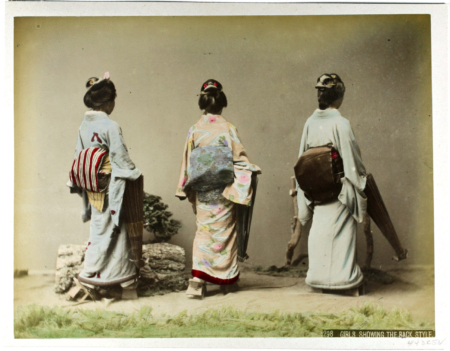Musubi 結び
The knot tied with the obi is known as the musubi
(結び/, lit.”knot”). Though obi functioned to hold the kimono closed for many centuries, beginning in the Edo period,
the obi became too wide and too stiff to function effectively in this manner.
In the modern day, a number of ties and accessories are used to keep the kimono in place, with the obi functioning in a more decorative capacity.
Though most styles of obi musubi can be tied by oneself, some varieties of formal women’s obi can be difficult to tie successfully without the assistance of others.
There are hundreds of decorative knots, particularly for women, often named for their resemblance to flowers, animals and birds.
Obi knots follow the same rough conventions of style and suitability as kimono do, with the more
complex and fanciful knots reserved for younger women on festive occasions, and knots with a plainer appearance being mostly worn by older women; however, some knots, such as the taiko musubi, have become the standard knot for women of all ages, excluding young girls.
In earlier days, the knots were believed to banish malicious spirits. Many knots have a name with an auspicious double meaning.
To be continued…
–
–
Picture “Girls showing the back style” by Kusakabe Kibei.



